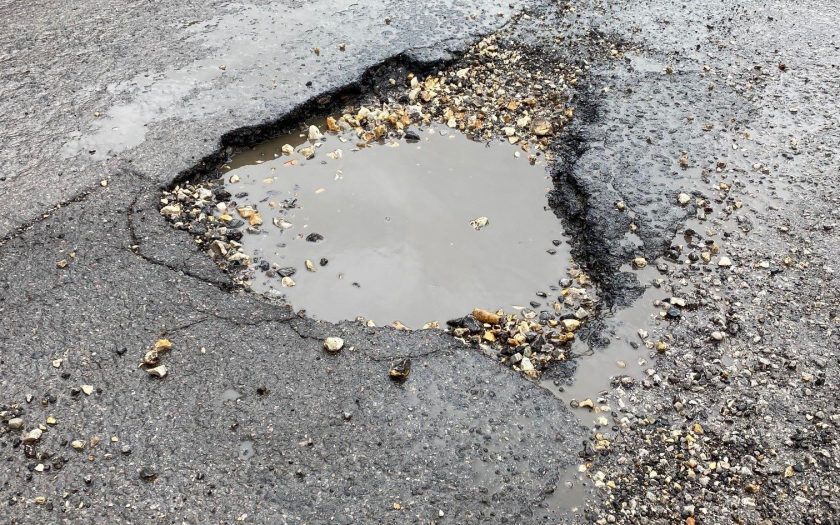WITH THE RECENT STORMS and council funding being allocated to other supposedly more pressing matters, our roads have deteriorated even further. Some potholes and broken verges are so bad, you wonder if you need an off-road vehicle just to traverse them
Tens of millions of dollars are needed to fix potholes and restore our roads to an acceptable standard, but don’t hold your breath! It has been estimated that potholes in NSW alone will cost councils $1.9 billion to repair.
Substandard roads are dangerous, and highly likely to damage cars, or substantially decrease their life.
Potholes have a significant financial impact on motorists, who most of the time must bear the cost of repairs to paintwork, suspension steering and tyres – even though they have already paid for local road maintenance through their taxes and fuel levies.
Those drivers who can’t afford these repairs risk making journeys in vehicles that are potentially unsafe.
This potential for damage to wheels and rims is exacerbated by the increasing tendency to fit car with low or very low-profile tyres, and ever-larger alloy rims. Low profile tyres are less able to absorb the impact. When you hit a pothole, there’s a chance you’ll blow out a tyre, or even damage a rim, both being a major expense. There’s also the risk of damage to suspension and steering, which can also be expensive to rectify. It the vehicle ahead of you hits a broken piece of tarmac, the debris can cause significant damage to your paintwork, windscreen or even body panels.

Here’s some advice that will not only help to keep you safe on your journeys but also assist you in dealing with the consequences of pothole damage:
Stay safe on the road
- Always be aware of dangerous potholes on your regular journeys. If necessary, find an alternative route.
2. Remember to keep your distance from the car in front. Motorists will often brake or swerve suddenly if they have spotted a pothole too late, so ensure you are far enough away to slow down safely.
3. Make sure you stick to the speed limit, and slow down on smaller roads and residential streets where potholes may be prevalent. Hitting a pothole at speed will cause much more damage to your vehicle.
4. Never swerve to avoid a pothole; always slow down or stop completely if necessary, checking that there are no cars close behind you. Drive over the pothole slowly or manoeuvre around it if it’s safe to do so.
Get something done
As usual, and frustratingly, reporting potholes or other road issues is made more difficult by the numerous responsible bodies.
It will help your local authority (and other road users) if you report any dangerous potholes. You never know; they may even get repaired!

The case for compensation
If you suspect that your vehicle has been damaged by a pothole, you need to immediately investigate and record the damage. If possible, take a photo of the pothole, note its location and take measurements of its size (if you photograph the pothole, use something like a soft drink can to indicate the scale). If there are any witnesses, ask for their details so they can confirm the incident. Once you have gathered your evidence, report the pothole to the local council.
So far, so good. At least you are encouraging the council to repair the road.
Getting compensation for the damage is another matter.
Local councils have an obligation to pay out for the damage caused by potholes they should have maintained. The onus is on councils to fix potholes immediately to avoid cases ending up in court. If your car is damaged by a pothole, you may have reason to make a claim.
Of course, the situation varies from jurisdiction to jurisdiction. We’ll use NSW as an example because, broadly speaking, the rules are the same across other States, although some terms and responsible bodies will be different.
Councils and other road authorities are given broad protection by the Civil Liability Act. Under Section 45 of the legislation a claimant would have to satisfy two provisions in order to be compensated for any damage to their vehicle:
- That the authority was specifically aware of that particular pothole (in other words, this it had been formally reported)
- The authority acted negligently in not dealing with the issue in terms of the resources they have available.
It doesn’t take a lawyer to see that gives councils and roads authorities the upper hand, and makes it difficult for aggrieved motorists to mount a case.
Most claims for pothole damage are denied because councils can show they were unaware of the pothole’s existence. Proving that they were aware of it is obviously not going to be easy.
Expect your letter requesting compensation to be routinely denied. If you feel your case is strong enough, consider getting legal representation or taking your case to the small claims court.
